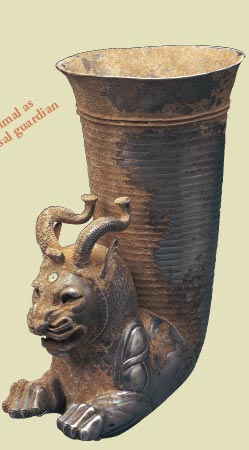

This year, MIHO MUSEUM welcomes its 20th anniversary. Since its founding, it has continued to highlight the fascinating art of the ancient Orient. Each work from this part of the world represents the crystallization of the deep, widespread spiritual world of the region and profoundly resonates in the hearts of people today. This exhibition explores the world of the Orient and its development eastward through 53 selected works (66 pieces). We hope you will enjoy the fascinating world that unfolds in this exhibit.


The ancient Iranians aspired for eternal life, which even the Mesopotamian heroes could not achieve, and which surpassed the judgment of the Great Flood and the circle of nature. This boat-shaped vessel may have played a leading role their rituals as a vessel from which life sprang.





Whence I came, and whither I go?
This is a relatively new question in human history.
The ancient Egyptians, without a doubt, sought the “Beautiful West,” the ideal land awaiting them after death in the direction of the sunset.
The letters engraved here is the name of that realm, that is also the name of the goddess of land.
This is a relatively new question in human history.
The ancient Egyptians, without a doubt, sought the “Beautiful West,” the ideal land awaiting them after death in the direction of the sunset.
The letters engraved here is the name of that realm, that is also the name of the goddess of land.

The rhyton was a drinking vessel of Persia, which united the ancient world of the Orient. Egyptian and Greek artisans made the example on the right. Images of the Persian lion-griffin with its goat horns made its way to East Asia, becoming sacred animal guardians.
The Elamite culture, in what is now southern Iran, had many gentle images of animals. This mascot-like ram is a formal pendant that was worn for rituals on the New Year’s day, a time of renewal. The Elamites knew the day of the spring equinox by observing the Aries constellation rising in the eastern sky just before daybreak. There lied their lives on the earth, together with the circle of nature.



Nomads transmitted images of the lion-griffin of the Orient to North and East Asia. In Han-dynasty China, they came to be known as the sacred guardians
Bixie and Tian lu. In time, they were adopted as lion dogs in Japan, the eastern end of Asia.
